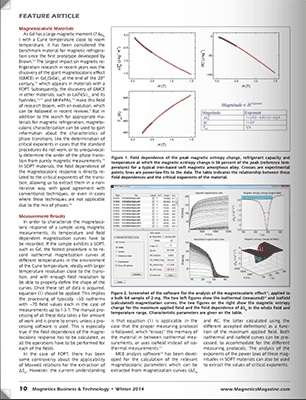
For many years, the scientific community has sought an alternative to conventional chemical refrigerant/heat-transfer compressor refrigerators, one that would use considerably less energy and be friendlier to the environment. Researchers have been working to replace the standard vapor-compression refrigerators with commercially viable magnetic refrigerators that rely on the magnetocaloric effect (MCE). Cooling would occur as a result of the magnetocaloric changes caused by applying and then removing a magnetic field on a magnetic material. Identifying the ideal magnetocaloric materials that can be used in mass-produced, consumer-grade magnetic fridges has been a challenge.
To explore the properties and commercial viability of these materials, one needs reliable magnetometry to characterize and analyze candidate materials for their MCE behavior. A lot of work has been done in this field recently, and to learn more about the magnetic measurement tools useful for MCE research, be sure to read this article, Magnetocaloric Measurements: From Energy Efficient Refrigeration to a Tool for the Study of Phase Transitions, newly published in Magnetics Business & Technology magazine. The article is authored by Dr. Victorino Franco of Sevilla University with Brad Dodrill and Dr. Cosmin Radu of Lake Shore, and it discusses magnetometry measurements of relevant MCE materials and the resultant analysis and procedures proposed to characterize the phase transition using purely magnetic measurements.
